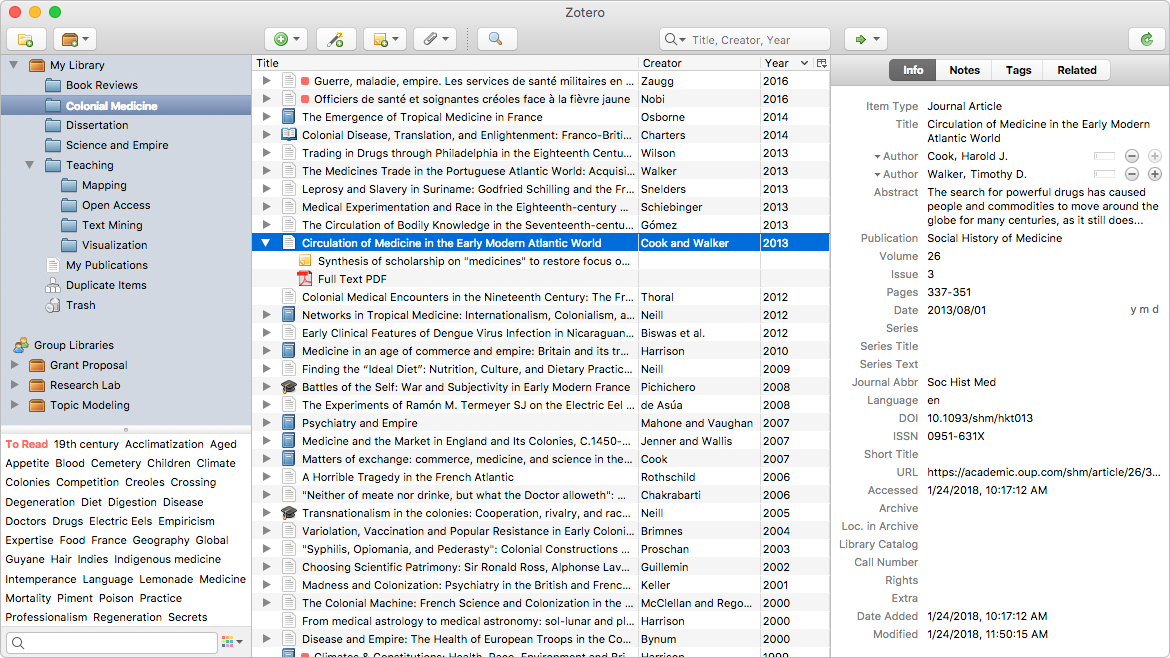

- #ZOTERO WORD PLUGIN HOW TO USE FOR FREE#
- #ZOTERO WORD PLUGIN HOW TO USE MANUAL#
- #ZOTERO WORD PLUGIN HOW TO USE DOWNLOAD#
I've opened a request on Zotero forum and in two days the style was created. Once I figured out there the style repository does not have a style for Demographic Research, one of the best journals in demography. And the project keeps developing nicely - just look at the recent Zotero blog entries on the new features such as Google Docs integration, Unpaywall integration and a new web service for quick citations.įinally, an example of how strong Zotero community is. As a career-long decision I'm confident in choosing Zotero. Academic community knows a lot about Elsevier in particular and for-profit products in general. There is no similar hack for Mendeley, and with them at some point one is bound to pay for extra storage.Īnother consideration in favor of Zotero is that it's an open-source program with strong community and outspoken commitment to stay free forever, while Mendeley is an Elsevier for-profit product. It's the main set-up hack that I'm showing in this blog post. Why do I choose and recommend Zotero then? Because it's fairly easy to set-up Zotero so that the free 300MB are only used to sync metadata (which in practice means almost infinite storage), and the PDFs are synced separately using a cloud solution of one's choice (I use Google Drive).

#ZOTERO WORD PLUGIN HOW TO USE FOR FREE#
Yet, both give some limited storage for free - Zotero gives 300MB, and Mendeley gives 2GB. Both are free to use and make money by offering cloud storage to sync PDFs of the papers. Probably, the most popular two are Zotero and Mendeley.

Some of them are free, the others require paid subscriptions. There are dozens of bibliographic managers out there ( see a comparative table). There are more than six thousand bibliographic styles! Why Zotero?
#ZOTERO WORD PLUGIN HOW TO USE DOWNLOAD#
All we need is to download a specific journal's citation style. For different bibliographic styles we just need to re-shuffle those blocks inserting various commas, semicolons, and quotation marks.īibliographic manager keeps track of all the LEGO blocks and knows (learns easily) how to compose proper citation styles out of them. I tend to think of bibliographic metadata as LEGO.įor each paper (book chapter / pre-print / R package) we have a number of metadata pieces - title, authors, date published, etc. Once you start using a reference manager this all becomes a happily forgotten nightmare.
#ZOTERO WORD PLUGIN HOW TO USE MANUAL#
I suffer almost physical pain just thinking about colleagues who for some reason never started using one - all those excel spreadsheets with favorite citations, messy folders with PDFs, constant hours lost for the joy-killing task of manual reference list formatting. Finally, I decided to translate it adding some basic information on how to use Zotero with rmarkdown.Ī brief (and hopefully unnecessary for you) intro of bibliographic managersīibliographic manager is a life saver in everyday academic life. This is a funny case of a self written manual which I came back to multiple times myself and many many more times referred my friends to it, even non-Russian speakers who had to use Google Translator and infer the rest from screenshots.

The post shows how to organize a personal academic library of unlimited size for free. Here is a bit refreshed translation of my 2015 blog post.


 0 kommentar(er)
0 kommentar(er)
